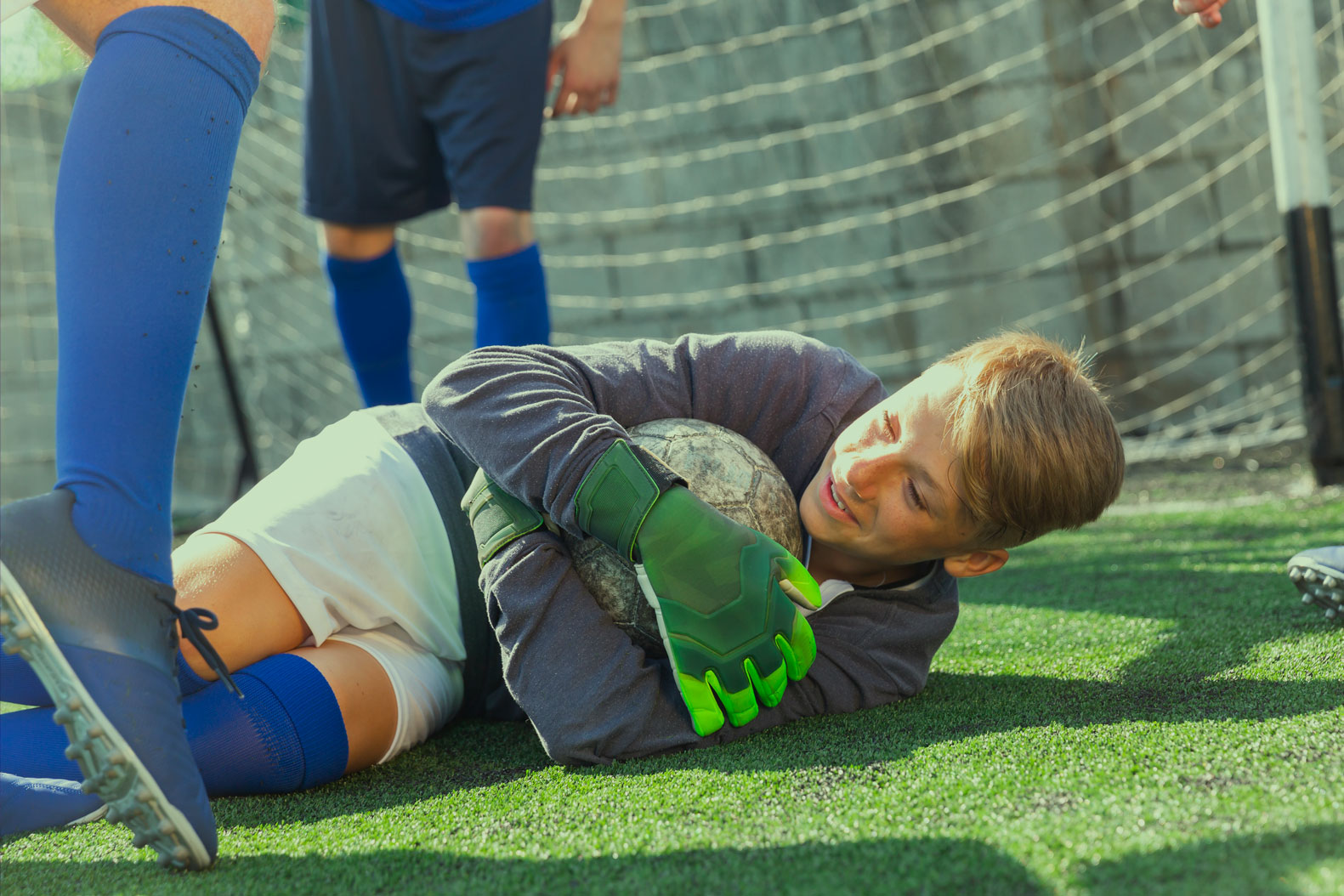
Improving reactions to short-range shots
Antoine Roex, Keeper In Motion – 5 December 2024
Discover the key techniques and exercises for improving goalkeepers’ reactions to short-range shots. These reflex and positioning skills can mean the difference between conceding a goal and making a decisive save.
Master positioning to maximize cage coverage
Positioning is essential for reacting effectively to short-range shots. The goalkeeper must stand in a balanced position, with feet apart for optimum stability and body weight centred to allow rapid movement in all directions. This positioning ensures that the goalkeeper can react to low or medium-height shots without losing balance. In addition, by positioning himself slightly forward, the goalkeeper reduces the angle of the shot and increases his chances of blocking quick attempts, which is crucial in high-pressure situations.
Reaction techniques: catching, parrying and using your feet
When faced with powerful shots from close range, goalkeepers need to quickly assess the best method of defense. Catching the ball is often the best option, but when a shot is too powerful or unpredictable, parrying the ball is a safe alternative. By using his hands and arms to deflect the ball, the goalkeeper can push it away into less dangerous areas. On the other hand, for low, quick shots, the use of the feet is sometimes necessary, especially when reaction time is limited. Techniques such as the ‘K-save’, where one leg and one arm are extended to cover a larger area, can be used to block angles close to the goal line.
Reflex training with speed exercises
Improving reflexes is crucial to managing short-range shots. Drills such as the Rapid-Fire Drill, in which a partner shoots several balls quickly towards the goal, help goalkeepers to develop their reaction speed and their ability to reset quickly between each attempt. Another effective exercise is the ‘Turn and Save Drill’, where the goalkeeper turns towards the goal at the signal of a partner before facing a sudden shot. These intensive exercises help goalkeepers to prepare mentally and physically for real-life game situations where every fraction of a second counts.
Concentration and visualization for optimum responsiveness
Mental preparation plays an important role in close-range shooting performance. Visualization exercises, in which goalkeepers imagine themselves successfully blocking shots, boost their confidence and their ability to anticipate the movements of attackers. In addition to physical concentration, these techniques enable goalkeepers to maintain a high level of vigilance, which is essential if they are to react instinctively and effectively to unexpected shots. By training themselves to remain fully concentrated, goalkeepers improve their ability to make split-second decisions, even under intense pressure.
Conclusion
Improving reactions to short-range shots relies on a combination of optimal positioning, appropriate techniques, targeted training and mental preparation. By incorporating these elements into their routine, goalkeepers can increase their ability to block shots and strengthen their presence in the box. This preparation, based on quick reflexes and maximum concentration, is the key to excelling at crucial moments in the game.
References :
